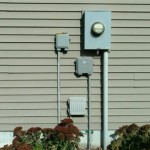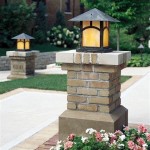How to Install Outdoor Light Motion Sensors
Outdoor light motion sensors are a valuable addition to any home, providing enhanced security, energy efficiency, and convenience. Installing these sensors is a relatively simple DIY project, and with the right tools and instructions, you can have your lights working in no time. This article will guide you through the process step-by-step, equipping you with the knowledge to install your outdoor light motion sensor effectively.
1. Gather Your Materials and Tools
Before starting, it's crucial to ensure you have all the necessary materials and tools. This includes:
- Motion Sensor: Choose a sensor with the desired features, like sensitivity, coverage area, and mounting options.
- Outdoor Light Fixture: Consider the type of light fixture, wattage, and style to meet your needs.
- Electrical Wire: Use the appropriate gauge wire for the light fixture wattage and the distance from the power source.
- Junction Box: If necessary, a junction box will connect the sensor to the light fixture.
- Wire Connectors: Use wire connectors designed for the type of wire used.
- Screwdriver: A Phillips head screwdriver is usually required for installation.
- Wire Strippers: For stripping the insulation off the wire ends.
- Voltage Tester: To verify power before connecting any wires.
- Safety Glasses: Always protect your eyes when working with electrical components.
- Ladder: For reaching the desired installation height.
2. Choose the Installation Location
Choosing the right location for your motion sensor is crucial for optimal performance. Consider the following factors:
- Coverage Area: Ensure the sensor covers the desired area you want to illuminate. The sensor's detection range is typically specified in its specifications.
- Obstacles: Avoid obstructions like trees, bushes, or walls that might block motion detection.
- Height: Mount the sensor high enough to prevent tampering and ensure a clear view of the area.
- Power Source: Ensure the sensor is within reach of an existing electrical outlet or wiring.
Once you've chosen the location, mark the spot for mounting the sensor using a pencil. Ensure the location is level and stable.
3. Disconnect Power to the Circuit
Safety is paramount when working with electricity. Before starting any wiring, always disconnect power to the circuit by switching off the corresponding breaker in your electrical panel. It's recommended to use a voltage tester to verify that the power is indeed off before proceeding with any wiring.
4. Mount the Sensor and Light Fixture
Depending on the type of motion sensor, you might need to mount it to a wall or a junction box. Most sensors come with instructions for mounting. Carefully follow the instructions, ensuring that the sensor is securely fastened and level.
After mounting the sensor, you need to install the light fixture. Again, follow the instructions provided with the fixture. Ensure that the fixture is securely mounted and that all connections are secure.
5. Connect the Wires
This is the most crucial step, so proceed with caution. Refer to the wiring diagram included with your sensor and light fixture for proper connections. The diagram usually indicates the specific wires (neutral, hot, and ground) and their corresponding terminals.
Stripping the insulation off the wire ends using wire strippers, connect the appropriate wires to the terminals:
- Neutral Wire (White): Connect the neutral wire from the sensor to the neutral wire from the light fixture.
- Hot Wire (Black): Connect the hot wire from the sensor to the hot wire from the light fixture.
- Ground Wire (Green or Bare Copper): Connect the ground wire from the sensor to the ground wire from the light fixture.
Use wire connectors to secure the connections. Ensure that all connections are tight and that no bare wires are exposed.
6. Test the Installation
Once the wiring is complete, it's time to test the installation. Turn on the breaker at the electrical panel and observe the sensor. Move within its detection range and check if the light turns on. If the light doesn't turn on, double-check the wiring connections and ensure the power is on.
7. Adjust the Sensor Settings
Most motion sensors have adjustable settings that allow you to customize their performance. These settings might include:
- Sensitivity: Adjust the sensor's sensitivity to detect motion. Increased sensitivity might trigger the light more often, while lower sensitivity might require more significant movement.
- Timer: Control how long the light stays on after detecting motion. Shorter timers save energy but might not provide adequate illumination.
- Dusk to Dawn: This setting allows the light to automatically turn on at dusk and off at dawn, eliminating the need for manual adjustments.
Experiment with these settings to find the optimal configuration for your needs and environment.

How To Install Security Lights Diy Family Handyman

How To Install An Outdoor Motion Sensor Light With Pictures

How To Wire Motion Sensor Occupancy Sensors

How To Install An Outdoor Motion Sensor Light With Pictures

How To Add Motion Sensor Outdoor Lights With Or Function Doityourself Com Community Forums

How To Install Outdoor Motion Activated Lights Tomcomknowshow

Motion Sensor Wiring Diagram Lights Outdoor

Installing A Remote Motion Detector For Lighting Diy

How To Make A Motion Sensor Light Stay On Rayzeek

How To Wire Occupancy Sensor And Motion Detectors
Related Posts







